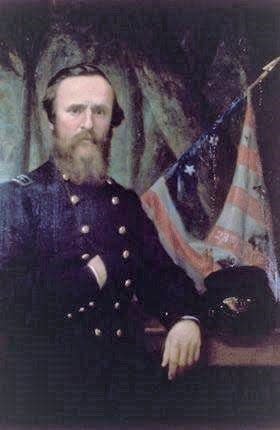Ohio history: Stanley Matthews nominated by two presidents to Supreme Court
- Oops!Something went wrong.Please try again later.
It’s interesting to note that Rutherford B. Hayes was involved in the naming of the man who was confirmed to the U.S. Supreme Court by an historic Senate vote.
The close vote wasn’t on Hayes’ nomination, but rather it came on a follow-up action by James Garfield. However, Hayes got the ball rolling, so to speak.
Stanley Matthews had a strong friendship with Rutherford B. Hayes
Stanley Matthews, who became friends with the future 19th president when both were students at Kenyon College, was initially nominated an associate justice of the Supreme Court in the final weeks of Hayes’ presidency. According to a number of sources, the nomination ran into opposition in the U.S. Senate because of Matthews' close ties to railroad interests and due to his close long-term friendship with Hayes.
Matthews elected to Supreme Court by one vote
The Judiciary Committee took no action on the nomination during the remainder of Hayes’ presidency, but 10 days after taking office the next president, James A. Garfield, re-nominated Matthews. Concerns about Matthews' suitability for the court persisted, and Garfield was widely criticized for re-submitting Matthews' name. In fact, the Judiciary Committee made a recommendation to the Senate that it reject the nomination, but the Senate voted 24–23 to confirm Matthews. The one-vote margin was the closest for any successful Supreme Court nominee in U.S. Senate history.
Matthews served as a member of the Supreme Court from May 17, 1881, when he took the judicial oath, until March 22, 1889, when he died.
The connections to Hayes were strong.

In early 1877, Matthews represented Hayes before the electoral commission that Congress created to resolve the disputed 1876 election.
That same year, Matthews won a special election to the Senate to fill a vacancy created by the resignation of John Sherman. He did not seek re-election.
It’s worth noting that more than three decades earlier, in 1845, Hayes, a young lawyer in Lower Sandusky at the time, was a member of the committee that examined Matthews’ qualifications for admission to the bar when Matthews was formally admitted in Sandusky County. Matthews, who lived in Cincinnati at the time, reportedly was visiting Hayes at the time.
In 1877, Matthews, who served in the Ohio 23rd during the Civil War, as did Hayes, attended a reunion at Spiegel Grove and sat at the speakers stand for the ceremonies held for the laying of the cornerstone of Fremont’s now- gone City Hall at Arch and Croghan streets.
The friendship of Hayes and Matthews apparently existed on many levels. They both belonged to a literary society in Cincinnati, for instance.
Matthews spent much of his life fighting discrimination, from editing an anti-slavery newspaper in his younger days to exercising his legal powers to fight prejudice all the way up to the Supreme Court.
Roy Wilhelm started a 40-year career at The News-Messenger in 1965 as a reporter. Now retired, he writes a column for both The News-Messenger and News Herald.
This article originally appeared on Fremont News-Messenger: Matthews was a controversial nominee to the high court
